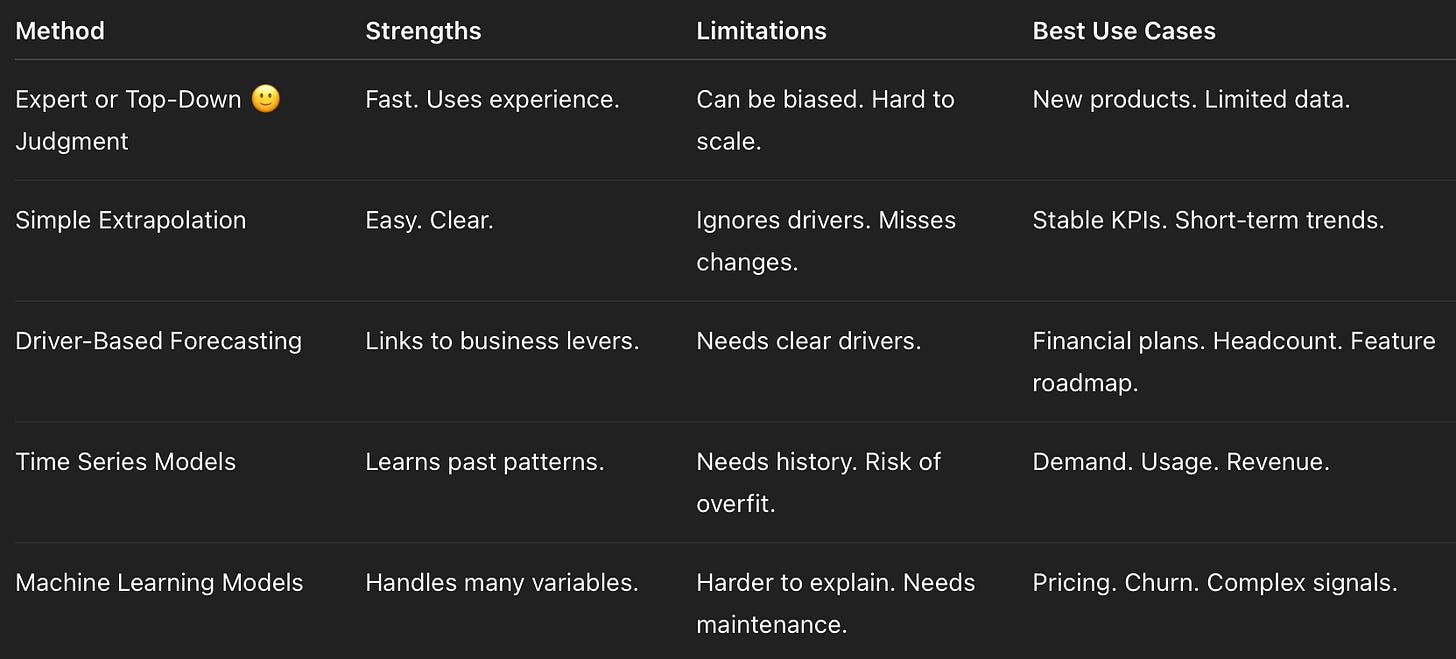Metrics lag. Forecasts lead.
How to choose and use forecasts to drive better decisions
Most dashboards tell you what happened. But good management is about what happens next.
If you don't have a forecast for a metric, you're not really managing it. You're watching it.
What would happen if your sales number next quarter was exactly what you have today? Would that be good or bad? Without a forecast you can’t even have that conversation.
If you don’t have a forecast, you don’t have a plan.
Recommended forecasting approaches
Not all metrics need the same forecast. Choose the method that matches the question you’re asking, the data you have, and the cost of being wrong.
Here is a simple table to help choose the right forecasting method for your metric.
Machine learning models in practice
Machine learning models can turn messy data into better forecasts. They’re valuable when simple trends fail or when you have many drivers.
There are open source libraries like Prophet, NeuralProphet, and LightGBM.
You also see embedded tools like Microsoft Copilot, Google’s Duet AI, and other analysis assistants showing up in everyday workflows.
I’ll admit I haven’t had the time to go deep with all of them yet.
But the promise is clear…. better forecasting at scale with less effort.
Still, automation doesn’t guarantee insight. Even with AI you need to choose the right question, the right horizon, and the right owner.
Forecasts don’t manage the business. You do.
Choosing between ML and simpler methods
Start with the easiest approach that works.
Simple methods are faster to build, easier to explain, and often good enough. They work best with stable metrics, clear trends, and small data sets.
Machine learning models help when you have lots of data, many drivers, or complex patterns. They adapt as new data arrives but need more care, monitoring, and expertise.
Ask yourself:
Do I have enough data to justify the complexity?
Will the extra accuracy change my decision?
Who needs to understand and trust this forecast?
Use complexity only when it pays for itself.
AI Tools lower the barrier to forecasting
AI tools can lower the cost of forecasting and reduce the barrier to entry. They build models faster and adapt to new data without constant work.
You don’t need to start from scratch….
Options include open source libraries and newer AI-powered assistants. They make forecasting more accessible for teams without deep data science resources.
Even with these tools, you need clarity on the question, the horizon, and the owner.
Forecasts don’t replace management. They inform it.
If you have good examples or useful questions you ask, please share more.


